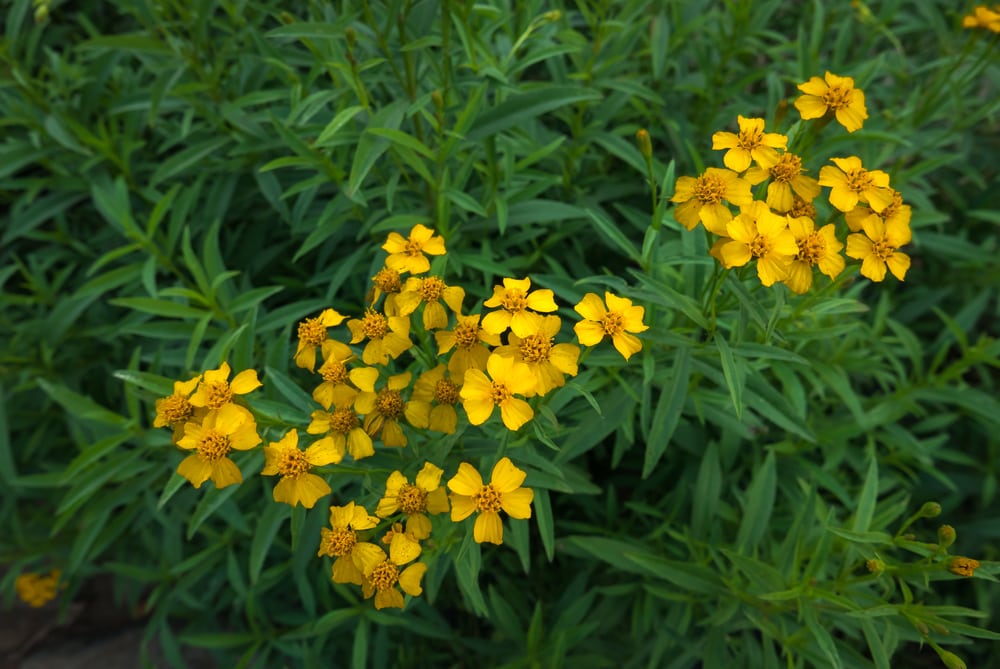
What is Tarragon?
Tarragon is a perennial herb that is used in culinary dishes commonly in French or Russian cuisine. This leafy green plant has a distinctive herbal flavor that makes it versatile for many kitchens and helps elevate recipes.
Tarragon is a member of the sunflower family and comes in three different varieties, each of which have their unique flavors and uses. These three kinds include Russian tarragon, wild tarragon, and French tarragon which is the variety you will find sold as dried spices in marketplaces.
This is a signature herb that is used in delicate dishes that cook quickly. Because of this, tarragon is considered one of the four fines herbes in French cooking. This four herb combination is typically used with ingredients with neutral flavor profiles such as chicken, eggs or fish. This pairing of herbs works significantly well with these ingredients, offering the taster plenty of aroma and flavors that blend perfectly.
What Does Tarragon Look Like?
Tarragon is a fine herb that is recognized for its long, slender leaves that come to a point. Look for stems with multiple bright green leaves growing off it. Different varieties of tarragon can be hard to differentiate by look. Use smell to distinguish between Russian and French tarragon.
What Does Tarragon Taste Like?
Tarragon has a complex flavor profile that can be difficult to pin down. This aromatic herb provides an intense taste that resembles licorice or fresh star anise. There is also a difference in the taste between fresh and dried tarragon. Unlike many other herbs, tarragon is used strategically and needs a good base food as well as a blend of other herbs to bring out the desired flavors.
What is Tarragon Used for?
Tarragon is mainly used for cooking, while it can also be used for medicinal purposes. This fresh herb works well with simple and delicate dishes like chicken or fish and can also be used as an alternative to the herb parsley when it comes to flavoring eggs and potatoes.
Those who utilize tarragon for medicinal purposes will find that this herb comes with a variety of health benefits. Tarragon is antibacterial and antiparasitic which means it has a history of being effective in treating pathogenic organisms and certain diseases caused by parasites such as malaria. In addition, tarragon has been shown to improve digestion and sleep as well as remedy toothaches and relieve inflammation with its strong antioxidant properties.
What is Tarragon Good for?
Tarragon is especially good for making cream or butter sauces. This is because they can harness the flavor of tarragon well without overwhelming the dish. It is probably known by most from the French sauce Bearnaise which is paired with steak. Tarragon vinegar is also a popular use of the herb and good for added health benefits to any meal.
What is a Substitute for Tarragon?
Tarragon can be substituted with any other of the three herbs within the fines herbes combination-chervil, chives, parsley. If these are unavailable, a little bit of dill or marjoram can work as a substitute as well.
What is Tarragon Vinegar?
Tarragon vinegar is a cooking ingredient that adds an aromatic herb and acidic flavor to many French recipes. It also has many practical uses besides cooking such as being used as a vegetable wash or kitchen cleaner.
How to Make Tarragon Vinegar
Tarragon vinegar can be made by infusing the tarragon herb with rice vinegar, lemon juice, coconut vinegar, white wine vinegar, or apple cider vinegar. Make sure to have at least half a cup of fresh tarragon for every two cups of tarragon vinegar you want to make.
What to Do with Fresh Tarragon
Fresh tarragon can be used in an assortment of ways. Use it in cooking as a way to spice up recipes or boil it with vinegar to create a tarragon vinegar to be paired with salads or used for cleaning. Easily add this into dishes by sprinkling a bit of fresh tarragon on roasted vegetables, pasta or fish.
How to Grow Tarragon
Tarragon is a difficult herb to grow from seeds so, to get started, you will need to obtain a clipping of tarragon root from an already established tarragon plant. Since this is a perennial herb, this process ideally only needs to be done once since it will continuously grow new leaves.
This delicate herb needs well-draining soil and plenty of sun and fertilizer. Changes in this ideal environment can cause the herb to die off. Control the level of fertilizer to ensure the plant doesn’t develop a bland flavor.
When leaves are ready to be harvested, simply pluck the leaves and use them fresh or dry them to store year round.
How to Dry Tarragon
Tarragon can easily be dried and packaged for use at any time. To dry tarragon, simply cut off a stem with plenty of leaves (make sure to wash) and dry them using an oven, humidifier, or even the sunlight in your kitchen. Once the herb is dry, separate the leaves and store in an airtight container.
How to Use Tarragon
Once dried, tarragon can be used to flavor recipes. Keep in mind that whole pieces of leaf retain flavor longer than crushed pieces so try to keep your dried tarragon intact until needed. Grind these leaves up just before adding them to your recipes to release the full flavor of tarragon.
